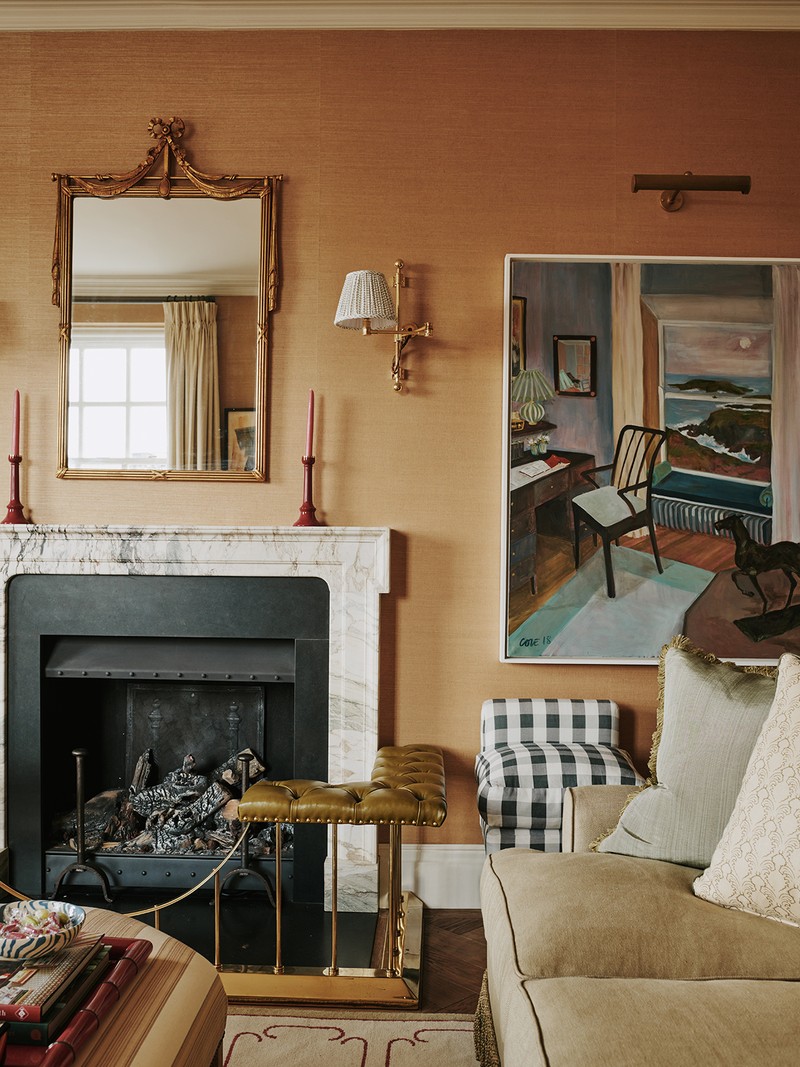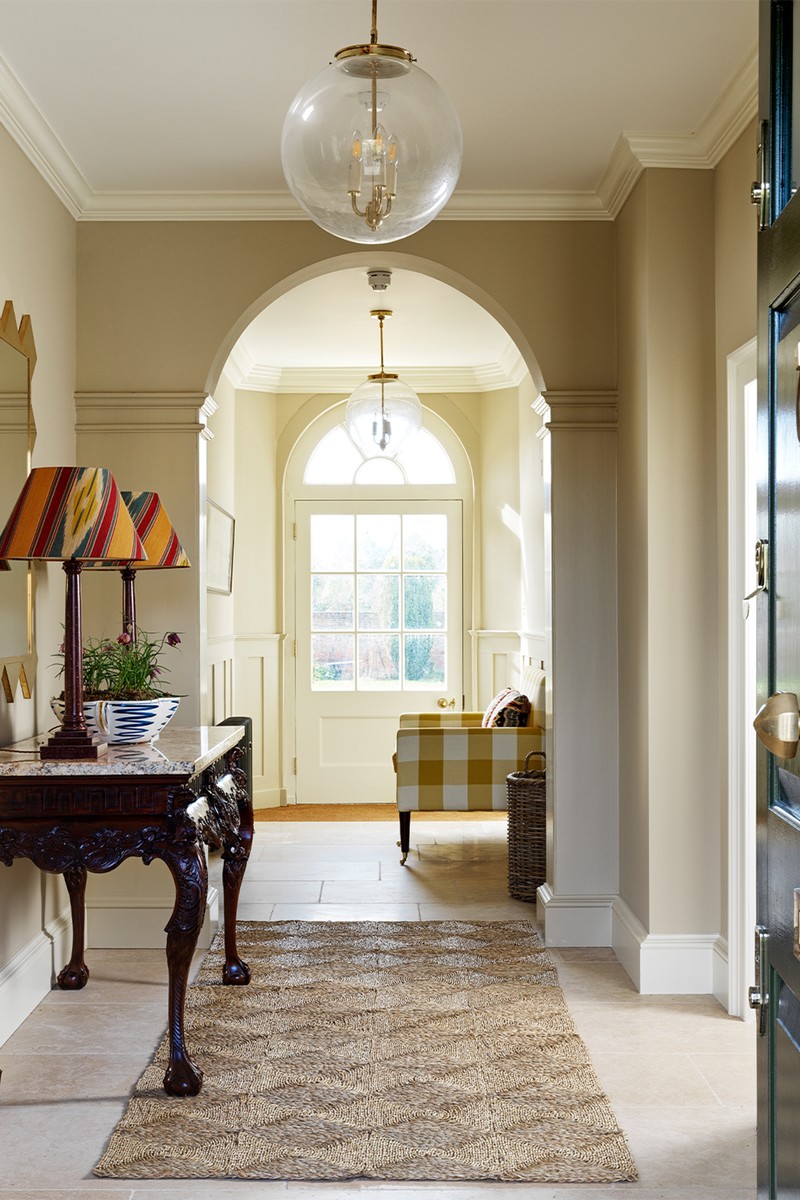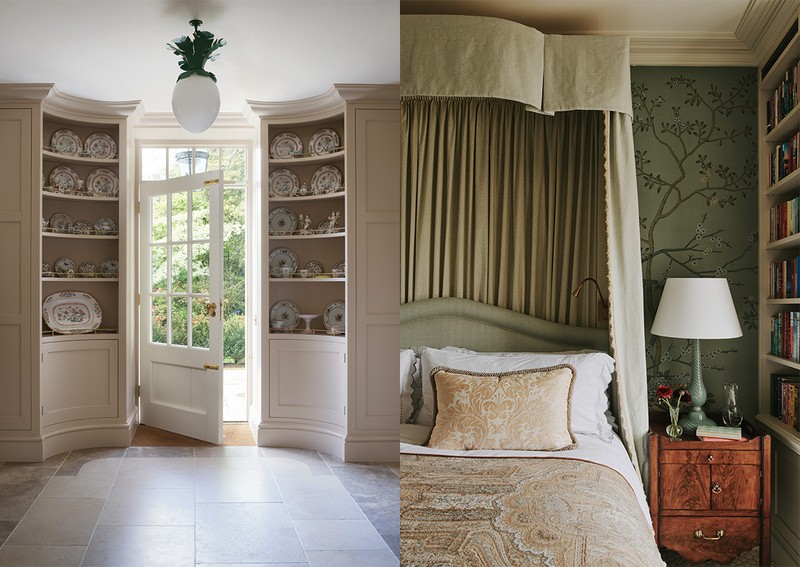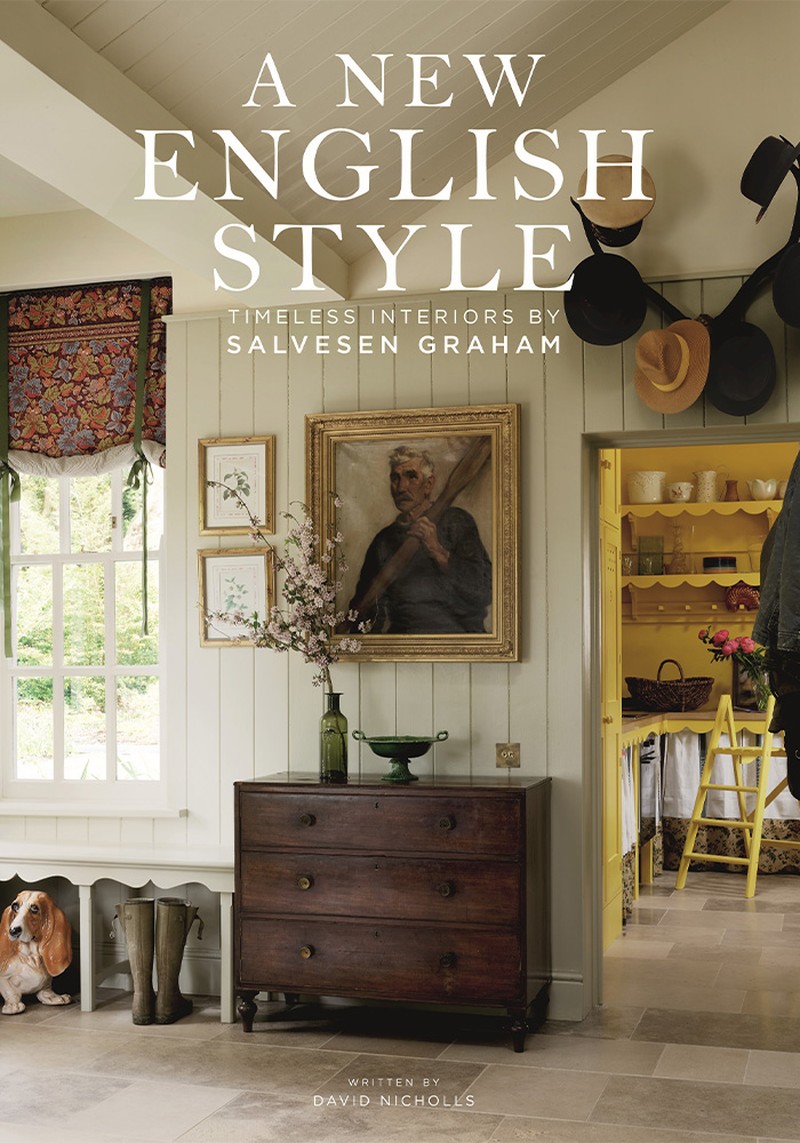
2 Interiors Designers Talk Style, Inspiration & The Concept Of ‘Future Heritage’
Let’s start with the new book – did it make you see your own homes differently or spark the desire to make any changes?
Working on the book certainly made us very reflective – less about our own homes (which always seem to get the least of our attention) but more about how we work for our clients, how we have evolved and how we want to grow as a design practice. English style is all about change and evolution and adding the next layer on to a house, so it felt very appropriate to reflect on that. We were also reminded of some real favourites from over the years – rooms that we worked on early in our career. It has been so satisfying to look at them now, ten years later, and feel confident that we wouldn’t change a thing.
That English style has such a rich legacy – how do you balance that with making a space feel current?
We always take the building itself as the starting point in terms of which traditional elements should be retained, reinstated and celebrated. That usually gives us a good indication of the direction the project is going to take. We both love history but houses should be living, breathing entities and our aim is never to make them museums. Even in a very traditional home we find one of the best ways to make the space feel current (and relevant to the client) is through personal belongings, so artwork, books, collections of objects. It’s hard to beat the combination of a formal drawing room with an amazing piece of contemporary art as the focal point.
The book also spans many locations – how do place and setting influence your design decisions?
One of the key messages from the book is that the essence of English style is not defined by location; it can be successfully exported all over the world – but in each setting, it has its own unique character. In much the same way that each project is different because each client is different. It is more about the spirit of decorating – layering, using antiques, the importance of comfort – than the setting.
Layering is a core part of your style – what advice do you have for getting it right?
Do it with confidence. The more you layer, the better it looks. We’ll always try and make sure there is a mix of both patterns and plains, but also a variety of textures, to ensure that a room has real depth to it. A thick cotton velvet that absorbs light is going to offset a light reflecting chintz for example. It’s important to remember layering isn’t just about using lots of different fabrics (sometimes we’ll just repeat the same fabric throughout a room), but it’s about considering all the different layers that make up a room – from the flooring to the lighting, the art on the walls, the books on the shelves, the different tones and finishes of paint on the woodwork. There are so many layers to a well-crafted room. It doesn’t have to be fussy, just considered.
What about antiques – is there a way to use them that feels fresh rather than formal?
Antiques are essential for grounding a room and helping it feel authentic but that doesn’t mean you need to be surrounded by old fashioned pieces. Go for items with sleek lines and perfect proportions – that could be a striking 1970s glass lamp but it could also be a classic Georgian centre table that looks fantastic with a modern pendant light hanging above it. Keep things simple. Don’t fill your house with antiques. Take it slowly and keep adding until you find your own personal tipping point.
How do you approach colour in your projects?
If we want to add a splash of colour in a traditional space, then we’ll do it in unexpected places e.g. inside a larder cupboard or, at the end of a corridor when you just catch a glimpse if a door is open. We live in a very conservative time where colour in the home is concerned. Most of our predecessors were much more comfortable with colour – think about the pastel-coloured confections that are Robert Adam interiors or the rich reds and greens of the Victorians. We’ll often start with a favourite patterned fabric, and take our colour inspiration from there, pulling different colours out and using them in differing strengths to give a room an identity.
Are there any design ‘rules’ you break in your own spaces that you might hesitate to try in a client’s home?
We are pretty good and practicing what we preach. We definitely disregard advice on things like heating requirements in a home as we find specialists are always telling our clients that they need large radiators everywhere – we’d rather put on extra jumper but have a more attractive room. There are also a lot of rules about the height of wall lights, or the distance required between furniture, but we are pretty laissez faire about that. So much of it is about comfort and what feels right, rather than what sounds good on paper.
What has living with your own interiors taught you about comfort, longevity or evolving style?
As we live and grow with our own homes, we are constantly reminded of the importance of quality design and craftsmanship. If you have a classic piece that’s well made, your style can easily evolve around it; accessories can change, artwork can be rehung, furniture can be recovered but the bones of the room will remain. This is something that we talk about a lot in the book. Getting the bones right – whether that be in the architectural details of a house, the layout of rooms and furniture, or the investment pieces that you buy. It’s so similar to fashion – creating a timeless and classic core that you can then build on and embellish.
The book also discusses the concept of ‘Future Heritage’ – what does that mean to you?
Creating interiors that respect and draw inspiration from the past while embracing modern aesthetics, technologies, and lifestyles. Our designs bridge the gap between the past and the future, where traditional elements co-exist harmoniously with contemporary innovations, resulting in interiors that are both timeless and forward-looking.
Finally, what do you hope readers take away from the book, both in terms of inspiration and practical advice?
We hope they feel that the book feels versatile, approachable and accessible to anyone. It’s not about creating a look that is stuffy and bound by tradition but rather celebrating the best of our heritage with the freedom to add and experiment with the best design of today. We want to give our readers the confidence to go with their gut and make their homes an extension of their own personality.
Visit SALVESENGRAHAM.COM
A New English Style: Timeless Interiors by Salvesen Graham, written by David Nicholls (Quadrille) can be purchased here.
DISCLAIMER: We endeavour to always credit the correct original source of every image we use. If you think a credit may be incorrect, please contact us at info@sheerluxe.com.


/https%3A%2F%2Fsheerluxe.com%2Fsites%2Fsheerluxe%2Ffiles%2Farticles%2F2025%2F04%2Fsl-020525-salvesen-graham-book-feature-3.jpg?itok=ujBse1LE)


